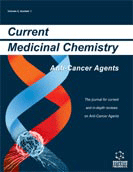Abstract
Selective aberrant cell suicide (ie., apoptosis or programmed cell death) is a hallmark of “nonneoplastic” tissue. In cells that have clonally evolved or in common parlance “cancer cells”, apoptosis is either itself aberrant or completely inhibited. Strategies to enhance apoptosis under conditions of cancer cellular stress is an evolving and actively investigated area of experimental therapeutics. Bcl2 proteins are key mediators of the process of apoptosis and ligands to these family of proteins have been described using modern combinatorial, computational and evolutionary small molecule screening approaches. Crystallization of several of the Bcl2 family members has provided clarification of the role of these ligands and provided a clearer mechanism of action for the consequences of ligand binding. In several cases, these ligands (e.g., HA14-1, 2-methoxy antimycin A) induce apoptosis even under conditions of Bcl2 overexpression and if developed preclinically will be promising anticancer agents. This rationale becomes even more striking when one observes overexpression of Bcl2 in 70% of breast cancer, 30-60% of prostate cancer, 80% of B-cell lymphomas, 90% of colorectal adenocarcinomas, and many other forms of cancer.
Keywords: bcl2 ligands, chemical structures, apoptosis, cell death
 5
5

















